How to Quickly Grow Food and Start a Successful EMERGENCY Garden
Learn how to start a successful food garden quickly and efficiently. Emergency gardening is not a new concept. For example, during WW2 Americans were encouraged to start “Victory Gardens” in order to be more self-reliant in case of food shortages.
It’s not hard to stock up on packaged “emergency food,” but lets face it – there’s no substitute for fresh, organic, wholesome, homegrown food.
With the recent events surrounding COVID-19 and it’s effects on society, many people are turning to “Pandemic Gardening” for two main reasons.
First, people have more time on their hands due to job loss or lockdown orders to stay at home. And the other reason is food security and self-reliance.
Nobody likes seeing empty shelves in grocery stores (due to hoarding). Nobody likes the idea that their favorite food item is out of stock due to supply chain problems.
Additionally, living in the middle of the Pacific Ocean presents Hawaii residents with other types of potential emergencies like hurricanes, storms, and tsunamis, which could all lead to disruption of normal life.
Affiliate disclaimer: As an Amazon Associate I earn from qualifying purchases. You don’t get charged extra and I make a small commission that supports Organic Hawaii. Mahalo!
In this article I will focus on how to grow a successful food garden for self-reliance, food security, and even survival during an emergency such as a pandemic or an unforeseen natural disaster.
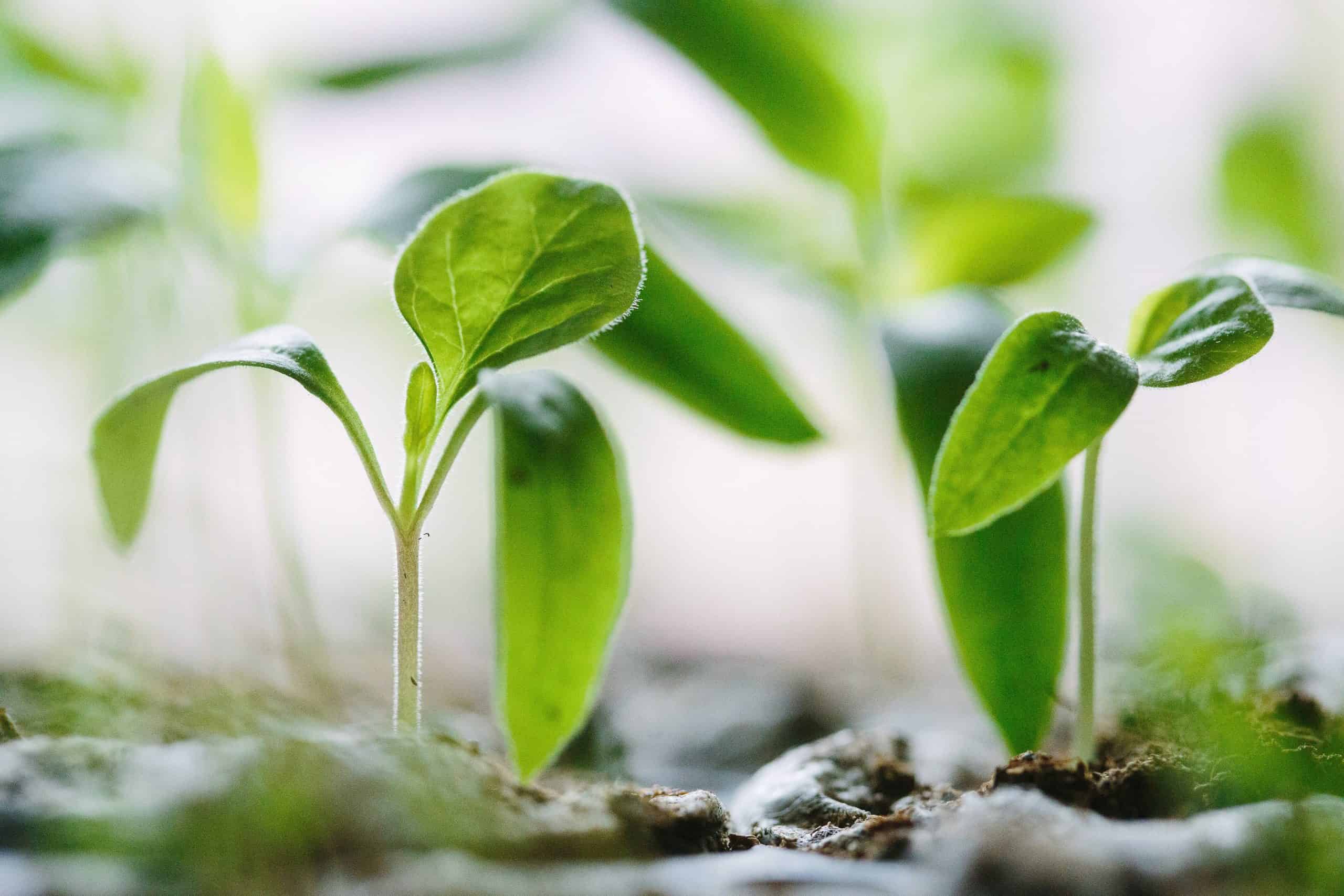
Finding space for your garden
The first question is do you have enough space to grow enough food to sustain you and your loved ones. The quantity of food you harvest will largely depend on the area you have available to grow it.
You can grow your own food even in small spaces and growing some of your own is better than none at all.
Having that said, it’s widely believed you can grow all of your food on as little as 1/4 acre of land for complete self-sufficiency. Of course, this takes planning and there are entire books dedicated to this fine subject like this one and this best seller.
If you don’t have enough space, maybe your neighbor with that large green lawn does. And maybe your neighbor would allow you to use that space in exchange for some of your harvest. Let’s turn boring lawns into exciting gardens!
If you have access to a larger space, it prudent to layout your garden design on draft paper in advance.
In some cultures like Indonesia forest gardening is a way of living. After all, before farming, humanity practiced hunting and gathering wild food grown in the wilderness. When it comes to wilderness survival in the islands, there’s an handy book called Emergency Food Plants & Poisonous Plants of the Islands of the Pacific.
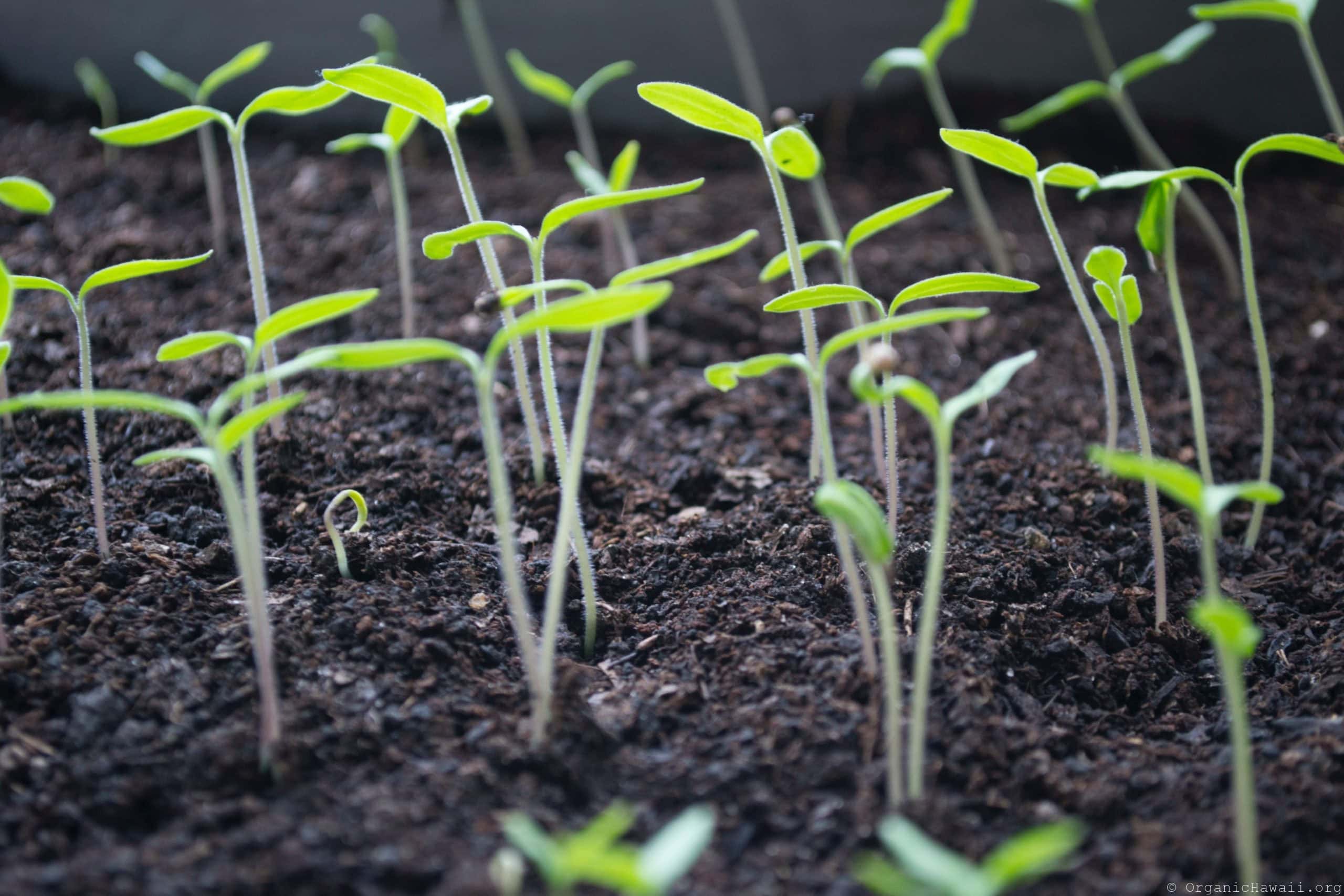
Back to the home garden..
Finding Good Seeds and Starters
Finding good seeds means that:
- Seeds are non-gmo, open pollinated, and preferably organic.
- Seeds are preferably local. So that they are adapted to your local growing environment, including pest and disease resistance.
- Seeds are appropriate for your climate zone.
Many tropical and subtropical plants like dragon fruit, bananas, taro, sweet potato, moringa, etc. can be grown from cuttings or shoots, which speeds up the growing process.
A note on hybrid seeds and plants. Hybrid seeds are usually labeled as F1 (meaning first generation). Hybrid seeds can be organic. Hybrid seeds are bred by crossing different varieties to achieve disease resistance.
The benefit is disease resistance. The downside is future generations (F2, F3..) will not be true to parent (F1), so these genetic traits of disease resistance aren’t necessarily passed down to future generations.
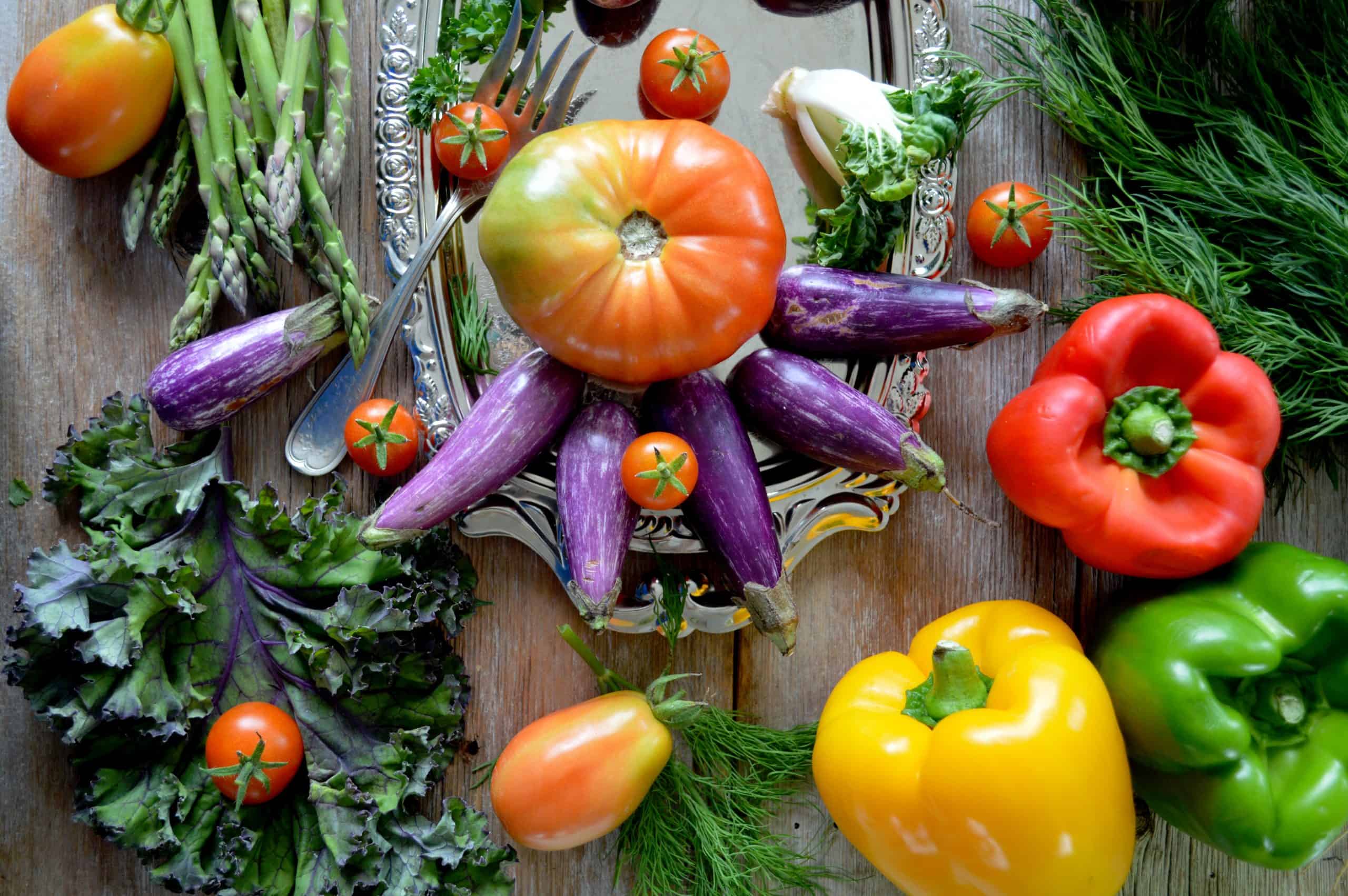
Which Food Plants Grow the Fastest?
Heads up. Gardening means growing “slow food” which is complete opposite of fast food. Plants take time to grow. Patience and care are a prerequisite for gardening success.
When it comes to quickly growing food – it’s about what food you can harvest the fastest.
Fastest fresh food you can harvest are sprouts and microgreens.
Sprouts don’t even require planting in the soil. They can be made in as little as 24 hours by properly soaking the seeds, such as alfalfa, sunflower, beans, etc. Sprouts are by far the quickest “live” food you can “grow” and are packed in nutrition.
Microgreens require planting into soil (or soil-like medium). Microgreens are young leafy greens such as kale, swiss chard arugula, even beets, carrot tops, etc. Once you plant the seeds, microgreens can be harvested in as little as 7-14 days.
Microgreens are also very nutritious, tender, and delicious. They require no cooking, but you have to plant a lot. Microgreens can be planted in flat trays and stacked vertically on shelves to save space.
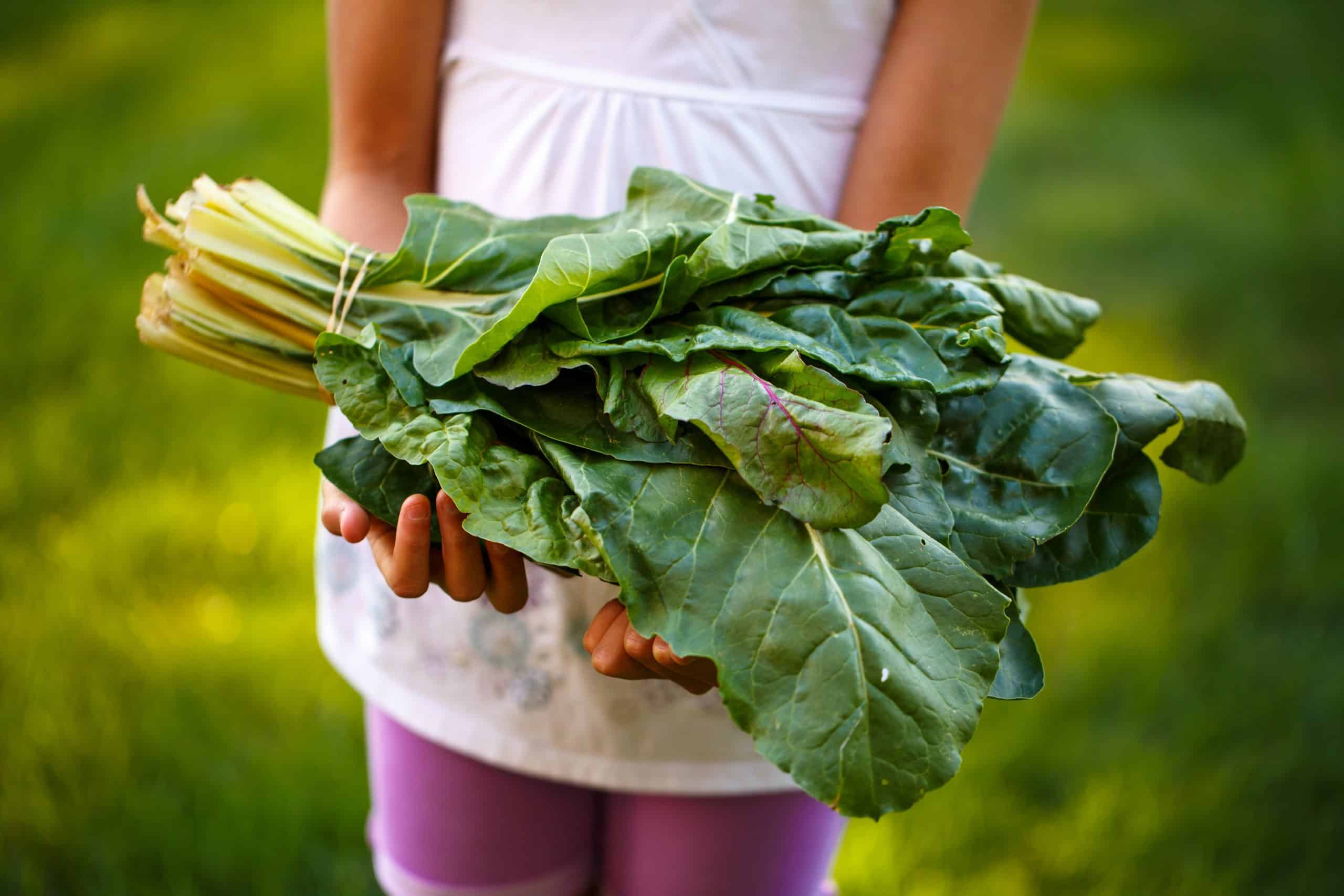
Leafy greens. After microgreens you have your leafy greens. These are basically mature versions of microgreens. Leafy greens can be harvested after about 3-4 weeks from the date of planting. These can be eaten raw in salads, sandwiches, or added to sous, stir-fries, and omelets.
Vegetables. When people think of growing their own food garden first thing that comes to mind is probably garden veggies like tomatoes, peppers, etc. Garden vegetables take about 2-3 months to produce fruit. So, planning and planting in advance is crucial.
Always try to plant more than less, just in case.
To speed up the process, you can buy pre-grown potted vegetable plants. Just make sure they have no disease and are not root-bound. Otherwise they may not grow well. Newly potted plants should be isolated in quarantine for at least one week away from all other plants.
Most vegetables require a good amount of sunshine, especially the Nightshade family such as tomatoes, potatoes, eggplant, and peppers – ideally at least 6 hours a day.
Fruit trees by far take the longest to produce. Depending on variety it can take as little as 1 year up to 8 years! Grafting speeds up fruiting, but it still takes at least a couple of years for most grafts. The benefit of this long wait is large, lifelong, harvests and hardiness (given that you properly take care of your trees).
Fastest fruit producing tropical plants
The good news is that some fruit trees can produce in as little as about 1 year. These fast producing fruit trees include bananas and papayas. Please avoid Rainbow Papaya, which is a GMO variety. Grow Solo Sunrise instead.
The cool thing about growing your own bananas is that you can grow different varieties. Especially rare, delicious, and nutritious varieties that you’ll never find in a grocery store. This awesome book is highly recommended.
Since we’re talking about quickly growing fruits, here are some more examples of fastest fruit producing tropical plants: fig, dragon fruit (Pitaya – grow from cuttings to speed up), poha berry (Cape Gooseberry), Passion fruit (Lilikoi) grow on wall or fence, Pineapple, and Noni (highly medicinal “canoe plant” and emergency food source).

Creating the Best Growing Environment for your Food Garden
Is it nature or nurture? In gardening it’s definitely both. And creating best conditions for your food garden plants will increase chances of success and decrease chances of set-backs.
Best soil. Start by creating best soil you can. Most plants don’t like clay soil. Most plants don’t like sandy soil. Most food plants like nutritious soil that is well-draining, but can also hold moisture and is dark in color.
Most plants like the soil’s pH to be somewhat neutral, but some like it more acidic or alkaline. To find out your soil’s pH and essential mineral content you can simply do a soil test.
Mixing in organic compost and some all-purpose organic fertilizer is a great way to make poor soil much better. I usually mix it at a 1 to 1 ratio of compost to poor soil. Adding organic worm castings is another excellent way to make your food plants grow better.
Deep soil. Most food garden plants like deep rich soil. A popular way to create depth is by using planting boxes and raised beds. This also elevates your plants above the ground level, making it harder for bugs to get to your plants. A spading fork and this tool are very handy at mixing and breaking up soil. Aim for at least 1 foot depth.
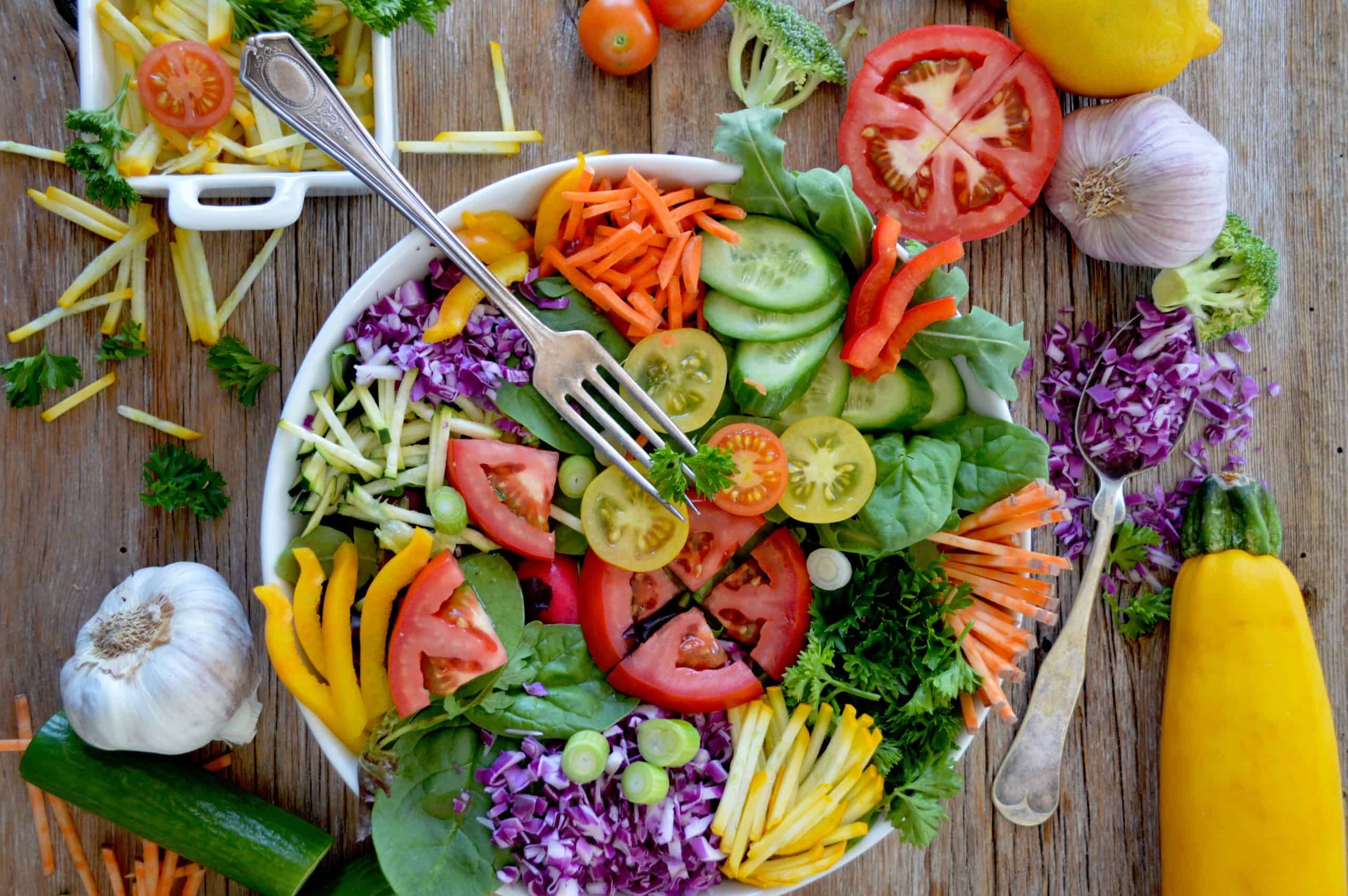
Best seeds. As mentioned earlier, start with best seeds suited for your local growing environment. Or plant healthy pre-grown potted plants to speed up the process.
Many tropical plants can be grown from cuttings i.e. taro, bananas, moringa, sweet potato, etc. This speeds up the growing process.
If you’re starting from scratch I recommend doing both, since most food garden seeds take at least about 1 week to sprout. And from then it’s still a long time until harvest.
Getting cuttings and pre-grown established plants will instantly lively up your new garden and make it more exciting to look at. Plus you can harvest pre-grown plants and cuttings sooner.
Annual vs. perennial. Annual plants only live for about 1 year (or one growing season), while perennial keep on living. So, it important to know which of your plants are annuals that way you can harvest on time, save the seeds, and replant in advance.
Sunshine vs. shade. If you want your food pants to thrive you have to provide them with optimal sun or shade requirements. Think where those locations are in your new garden in advance, according to the type of plant to avoid placing them in the wrong spot.
Generally, many subtropical and tropical plants prefer full sun, this includes the nightshades. Leafy greens, however may get burt by too much Hawaiian hot sun. So part shade may be appropriate to avoid burning those plants.
Optimal watering. In Hawaii, most plants like to be watered daily, especially in the Summer, but overwatering can create root rot and other fungal diseases. It’s best to water in the morning and/or evening.
Watering will also depend on how much rain your location receives. Some plants like aloe, can be easily killed by regular watering, so more is not always better.
Watering with purified water is better because a garden water filter reduces the amount of toxic chlorine, toxic heavy metals, and other contaminants that would otherwise end up in your soil and your plants.
Chlorine is known to kill off beneficial bacteria in your soil, which is not good and certain plants uptake toxic heavy metals from the soil more so than others.
Companion planting. It’s well established that certain plants like to be planted next to each other, while others grow poorly together. Some plants, like mints and certain herbs, actually help repel bugs from their companion plants like tomatoes. You can use companion planting tables to see which plants to plant together and which not to.
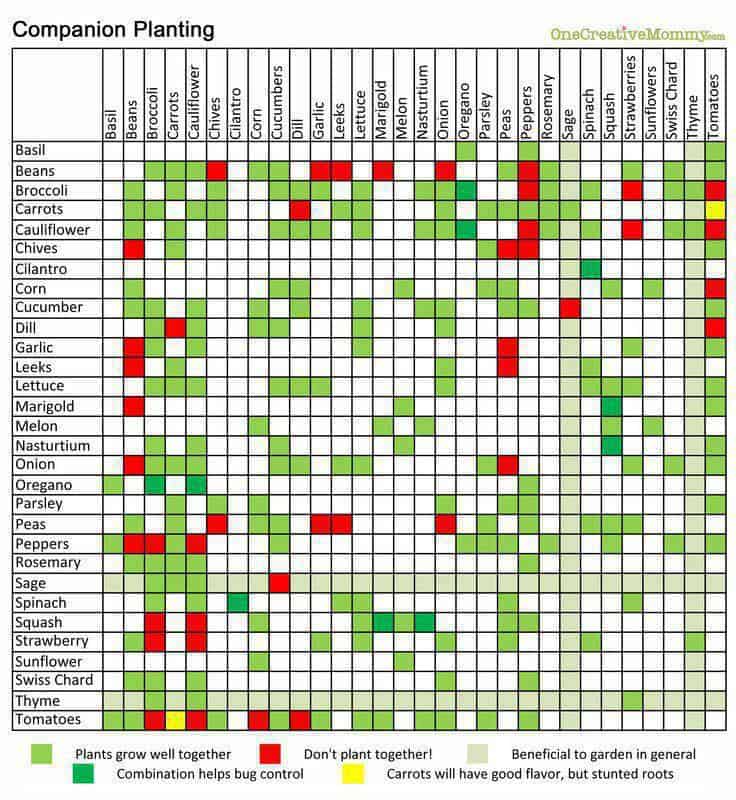
Pollinators and other good bugs.
“Is it a friend or foe?” – is common question in gardening circles. Not all bugs are bad. Some insects, like the pollinators are essential. Pollinators include bees, butterflies, but other insects that pollinate your plants’ flowers, ensuring fruit production.
Not all plants are self-pollinating, so attracting pollinators is important by planting what attracts them. For example, bees absolutely love basil plus it’s a great culinary herb. Planting a nice variety of flowers will not only brighten up your garden, but will also attract the pollinators.
Without the pollinators we’d have to pollinate many plants by hand, which is very labor intensive, as you can imagine.
Other bugs are beneficial because they feed on the bad bugs that destroy your plants. These beneficial insects include wasps, lady bugs, and lacewings.
Dealing with bad bugs, pests, and viruses.
There are many books dedicated to this subject. But to keep it simple, I recommend to at least get Diatomaceous earth (DE) and organic Neem oil. DE is great for many bugs such as ants, roaches, cutworms, etc.
You can even make your own DIY organic bug spray using basic ingredients and essential oils.
Neem oil is great for different kinds of bugs that have soft bodies and waxy coating like aphids, mealy bugs, mites, and white flies, but it’s actually very versatile for other plant pests including scale. In this video we talk about benefits of Neem oil in detail.
Slugs are awful and can quickly eat your leafy greens and kill young seedlings. Plus they can carry nasty disease such as the rat lungworm.
Slugs usually come out at night. Introducing ducks or even attracting garden frogs may help. Also using copper tape around your pots or raised beds is definitely worth a try.
Viruses are a bit harder to deal with since they are so tiny, but using colloidal silver on plants and soil is very promising. Colloidal silver is also effective against bacterial and fungal pathogens.
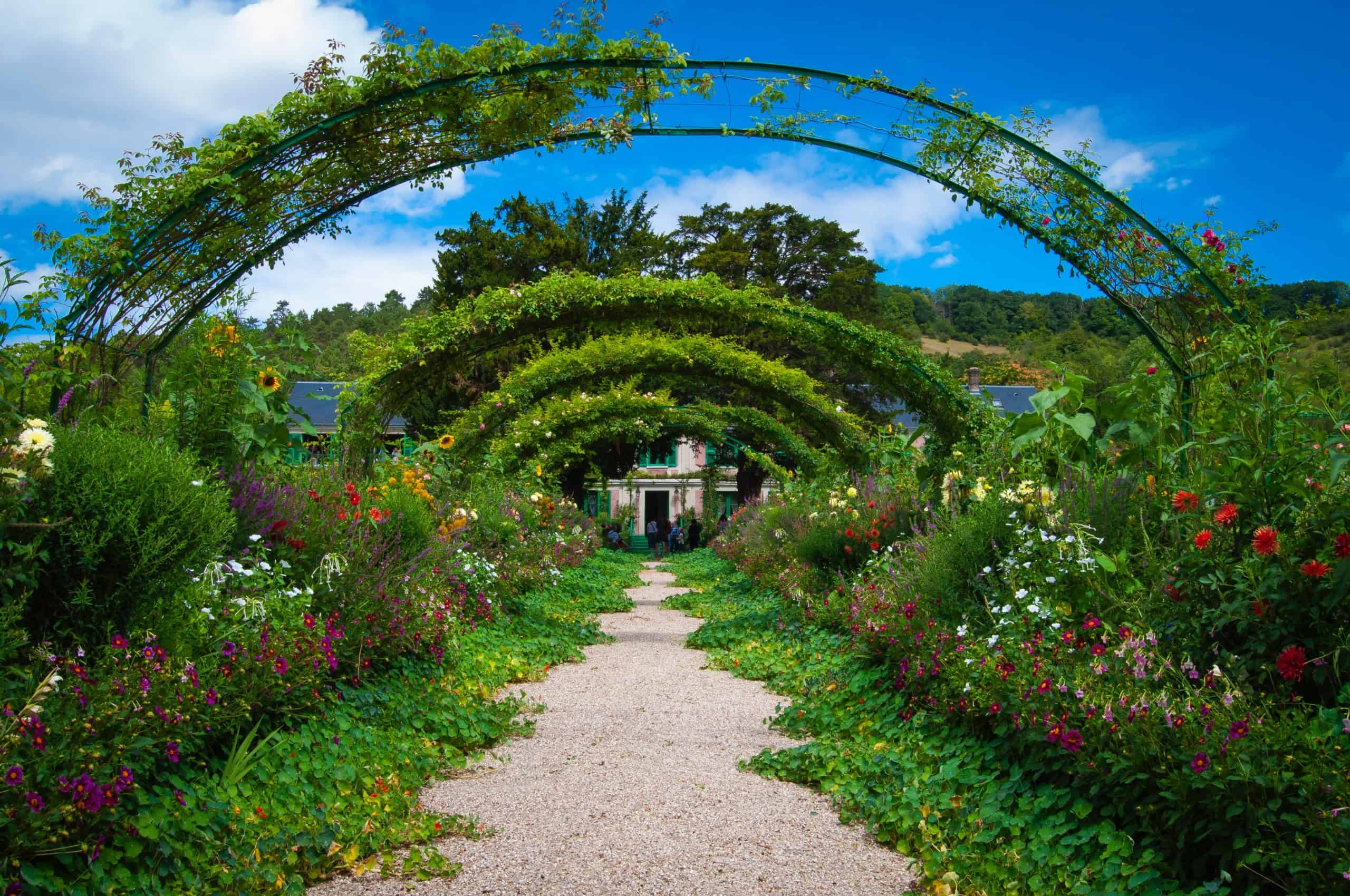
Mulching.
Mulching is adding chopped, dry plant material on top of your soil and around your plants. Benefits of mulching include: water conservation, weed control, and pest control.
Optimal Nutrition for Your Food Garden.
Plants require basic nutrition, as expressed by N-P-K (Nitrogen, Phosphorus, and Potassium). Nitrogen (N) can speed up the growth of your plants, especially leafy greens. However, tToo much N is not recommended during the flowering/fruiting stages, since you want your plant to focus on making fruits, not new leaves.
Plants also highly benefit from other minerals, beneficial soil bacteria, and worms. So, don’t forget to feed your plants every now and then with organic amendments like organic compost, compost tea, composted manures, worm castings, and all-purpose organic fertilizers.
Optimal Nutrition from Your Food Garden.
Humans require three basic food groups for optimal nutrition and health: protein, carbs, and fats. We also require vitamins and minerals. Most food garden plants are low in protein and fats, but high in vitamins and minerals.
However, certain nuts and seeds are actually great sources of both: protein and healthy fats. Plus, they are high in multiple minerals. Without a doubt, sunflower, hemp, and pumpkin seeds are Superfoods that contain generous amounts of the essential magnesium, selenium, Vitamin E, manganese, and zinc just to name a few.
Also, backyard chickens and ducks are a popular option for homegrown protein and organic eggs are an excellent source of choline and essential omega-3 fats. Additionally, they will eat the bad bugs (and slugs) while fertilizing your soil with their manure.
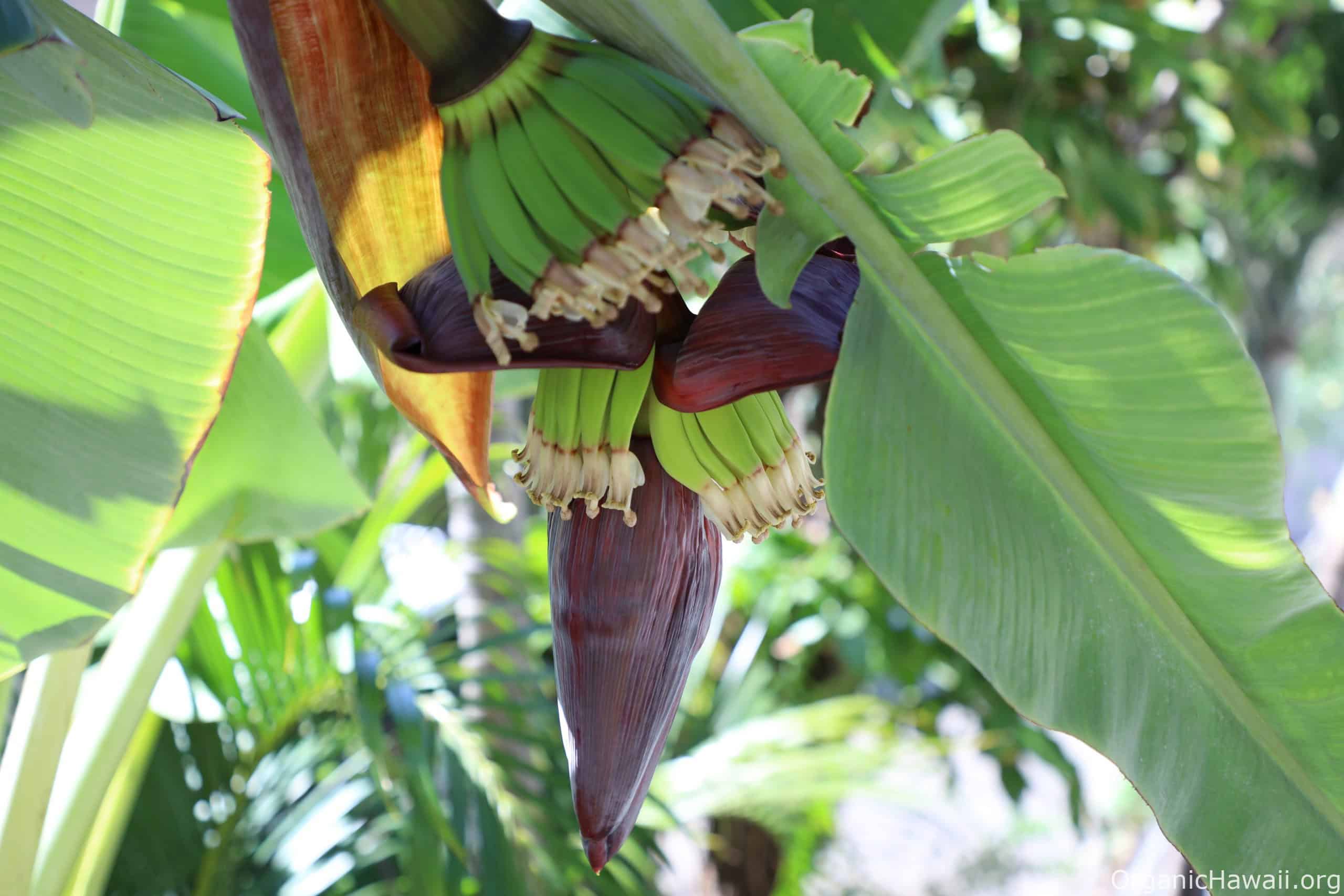
For further reading..
Check out this simple, but crucial guide: “Can I Grow A Complete Diet?” on what exact tropical and subtropical plants to grow for optimal nutrition and self-reliance in Hawaii.
Final thoughts..
If you’re just starting out just remember to be patient. Once your garden is established, it will be easier to care for, requiring minimal time and effort.
Food gardening is about the journey AND the destination. It’s a great form of light exercise, and it’s a meditative process that connects us with our source.
Best of all, growing your own food makes you more self-reliant and independent, while providing you and your family with healthy, ultra fresh, and nutritious food at your doorstep.